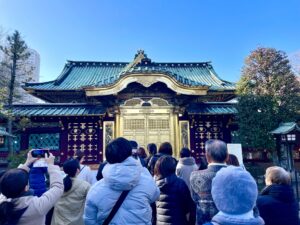Connect the dots between Japan’s evolving work styles (Work Style Reform, telework, flexible schedules) and the cultural meaning of Labor Thanksgiving Day (Kinrō Kansha no Hi). Offer practical takeaways for travelers, expats, and employers operating in Japan in 2025.
What Is Labor Thanksgiving Day (Kinrō Kansha no Hi)?

Labor Thanksgiving Day is Japan’s annual public holiday on November 23 dedicated to “respect labor, celebrate production, and give thanks.” When the date falls on a Sunday, the following Monday becomes a substitute holiday under Japan’s holiday law. The modern observance was codified in 1948, reframing an older imperial harvest rite into a civic day of appreciation for workers and production. In everyday life the tone is low-key: schools, some workplaces, and neighborhood groups mark the day with thank-you messages, recognition moments, and community service rather than formal feasts. Travelers typically find retail and transportation operating as usual while government counters are closed.
How people celebrate today (text-only box): Many elementary schools have children create cards for local workers (postal staff, firefighters). Some workplaces use the week to highlight achievements or safety milestones. Local communities may host small fairs or volunteer clean-ups. The historic imperial Niiname-sai rite continues privately at the Imperial Palace on the same date.
Source: Wikipedia “Labor Thanksgiving Day” (https://en.wikipedia.org/wiki/Labor_Thanksgiving_Day)
Source: Kids Web Japan “Labor Thanksgiving Day” (Web Japan) (https://web-japan.org/kidsweb/explore/calendar/november/labor_thanks.html)
Origins: From Harvest Festival to Modern Holiday
Long before it became a public holiday, Niiname-sai (the tasting of the year’s new rice) marked the emperor’s ritual thanks for the harvest. In the Meiji era, these rites were formalized within the modern state. After World War II, the 1948 Holiday Law recast November 23 as a secular, citizen-facing day to value workers and production—preserving the spirit of gratitude while shifting from an agrarian thanksgiving to universal appreciation for labor. Today, the Imperial Household still conducts Niiname-sai privately while the public observes Labor Thanksgiving Day. Timeline in prose: ancient agrarian rite → Meiji codification of imperial ceremonies → 1948 Holiday Law sets “Labor Thanksgiving Day” on Nov 23 → contemporary civic practices (school thank-you cards, workplace recognition).
Source: Wikipedia “Labor Thanksgiving Day” (https://en.wikipedia.org/wiki/Labor_Thanksgiving_Day)
Source: Japan Mobility “Celebrating Labor Thanksgiving Day in Japan” (https://www.japanmobility.co.jp/blog/labor-thanksgiving-day-japan)
Source: Kanpai Japan “Thanksgiving in Japan – Celebrating National Labor Day” (https://www.kanpai-japan.com/holidays/labor-thanksgiving-day)
Japan’s Modern Work Styles in 2025: The Fast Overview

Japan’s Work Style Reform framework sets the standard 40-hour week and introduced enforceable overtime caps: in principle 45 hours per month and 360 hours per year; with a special labor-management agreement, overall ceilings become ≤720 hours/year, <100 hours in any month (including holiday work), and ≤80 hours/month on average over any 2–6-month period. Employers that breach these limits face penalties. Reforms also strengthened paid leave usage (employers must ensure at least five days are actually taken annually) and, in 2024–25, added physician overtime limits and an enforcement push tied to digital timekeeping. Telework and hybrid arrangements are uneven but established, helped by ongoing digitalization.
Key Numbers (2025):
• Overtime caps (general): 45h/month, 360h/year; with special agreement: <100h in any month, ≤720h/year, ≤80h/month average across 2–6 months.
• Telework prevalence: below ~20% of workers by micro-data analysis (FY2022 base), higher in major metros.
• Four-day week: Tokyo Metropolitan Government to introduce a public-sector option from April 2025; national debate continues.
Source: JILPT “Current State of Working Hours and ‘Work Style Reform’ in Japan” (2025, PDF) (https://www.jil.go.jp/english/jli/backnumber/2025.html)
Source: Talent Intelligence “Japan Caps Overtime Under ‘Work Style Reform’ (Overview, 2025)” (https://www.talentintelligence.com/insights/japan-work-style-reform)
Source: Business Insider “Tokyo to introduce four-day workweek for gov’t staff” (https://www.businessinsider.com/tokyo-government-four-day-workweek-2024-)
Remote & Hybrid Work: How Common Is It?
“Remote work” in Japan has settled into a moderate baseline: strong in Tokyo-centric information and professional services, thinner in manufacturing, retail, and on-site roles. High-quality micro data (RIETI, using the 2022 Employment Status Survey) places national telework implementation below 20%, with 90%+ of teleworkers working from home; telework accounts for roughly 7% of total labor input. Media and consultancy snapshots often cite somewhat higher point estimates (low- to mid-20s) due to urban skew, employer samples, or differing survey frames. Reported benefits include commute-time savings and improved focus time; common frictions include communication, onboarding, and after-hours messaging boundaries.
Text table — Telework at a glance
| Source | Year (data) | Telework Rate | Notes |
| RIETI (micro-data overview) | 2022 | “<20%” | 90%+ WFH; telework ≈7% of total labor input. |
| MLIT (cited in academic review) | 2021 | 27% (Japan), 42% (Tokyo metro) | Pandemic-era level; normalized downward afterward. |
| Private/media snapshots | 2024–25 | ~20–25% | Higher in Tokyo, white-collar sectors; methodology varies. |
Source: RIETI “Telework in Japan from Micro Data” (Overview, 2024/25) (https://www.rieti.go.jp/en/)
Source: Jelper “How Digitalization and the Spread of Remote Work Are Changing Japan’s Work Styles” (2024) (https://info.jelper.co/)
Source: One Step Beyond “The Future of Remote Work in Japan: How Companies Are Adapting” (2025) (https://www.onestepbeyond.co.jp/blog/remote-work-japan)
The 4-Day Workweek & Flexible Schedules
In a headline move, the Tokyo Metropolitan Government will offer a four-day workweek option to public employees from April 2025, positioning flexibility as part of the response to low fertility and long-hours culture. National policy is also expanding reduced-hours and flexible options for parents of young children. Private-sector pilots exist but remain selective; debates weigh productivity, service coverage, and pay calibration. Globally, multi-country trials (e.g., 4 Day Week Global) report steady or improved productivity with lower burnout—useful signals for Japan, though localization is essential given service expectations and seniority norms.
Pros & Cons (from early trials and research, text only)
Pros: better retention; fewer sick days; easier caregiving; protected deep-work windows.
Cons: customer-facing coverage gaps; risk of intensity compression; equity issues across roles; higher coordination overhead.
Source: Business Insider “Tokyo to introduce four-day workweek for gov’t staff” (https://www.businessinsider.com/tokyo-government-four-day-workweek-2024-)
Source: news.com.au “Japan’s four-day week changes kick off in April” (2025) (https://www.news.com.au/)
Work Style Reform: What Employers and Workers Must Know

Core overtime rules: Legal working hours are 8/day, 40/week. Overtime is capped at 45h/month and 360h/year in principle. With a duly executed Article 36 Agreement (“saburoku”), absolute ceilings become ≤720h/year, <100h in any month (including holiday work), and ≤80h/month on average across any 2–6 months; not all months may exceed 45h. Employers must also ensure at least five days of paid annual leave are actually taken by each eligible employee. Sector-specific updates introduced physician overtime caps from FY2024 with strict annual ceilings and transitional categories; 2025 enforcement places greater emphasis on digital timekeeping and auditable records.
Practical checklist for foreign employers launching in Japan (2025): deploy accurate digital time tracking (clock-in/out plus approval logs); conclude and file an appropriate 36 Agreement if any overtime is expected (renew annually); configure approval workflows to prevent breaches of <100h/month, ≤720h/year, and the ≤80h average test; enforce breaks and rest periods; plan and record the mandated five days of paid leave; publish telework/after-hours messaging policies (response expectations, delay-send norms); map regulated roles (e.g., physicians) to the right cap category and keep evidence; train managers to avoid last-minute overtime without sign-off and to monitor health risks for high-hour workers. Always confirm with official MHLW guidance and the Labor Standards Act.
Source: MHLW “Work Style Reform” (English portal) (https://www.mhlw.go.jp/english/policy/employ-labour/labour-standards/dl/201904k.pdf)
Source: JILPT “Current State of Working Hours and ‘Work Style Reform’ in Japan” (2025) (https://www.jil.go.jp/english/jli/backnumber/2025.html)
Source: MHLW “Article 36 Agreement (Overtime and Holiday Work)” Guidance (English) (https://www.mhlw.go.jp/english/)
Source: Talent Intelligence “Japan Caps Overtime Under ‘Work Style Reform’ (Overview, 2025)” (https://www.talentintelligence.com/insights/japan-work-style-reform)
Compliance Cheat-Sheet
Quick audit checklist:
• Contract specifies the 8/40 baseline and overtime/night premiums.
• Article 36 Agreement in place and renewed; busy-period caps configured in your HRIS.
• Daily timekeeping is digital, tamper-resistant, with manager sign-offs.
• Breaks/rests recorded; medical surveillance for high-hour workers.
• Paid leave granted and tracked; managers proactively schedule 5+ days used.
• Telework policy clarifies working hours, workspace safety, equipment, and data security.
• After-hours email/IM guideline (e.g., delay-send, no expectation of replies after a set time).
Source: MHLW “Work Style Reform” (English portal) (https://www.mhlw.go.jp/english/)
Do & Don’t (for managers)
| Do | Don’t |
| Approve overtime in advance; check cap dashboards weekly. | Assume “just this month” can exceed caps—busy-period rules still cap hours. |
| Schedule paid-leave usage within the calendar year. | Let carry-overs pile up; non-use risks non-compliance. |
| Use delay-send and written norms for after-hours messages. | Reward presenteeism or late-night replies. |
| Offer hybrid options where operationally feasible. | Mandate blanket office returns without role-based justification. |
Connecting Culture and Work: Why Labor Thanksgiving Still Matters
The holiday’s gratitude theme maps cleanly to modern engagement practices: peer recognition, psychological safety, and sustainable productivity. Many schools still have children craft thank-you notes to workers—an easy analog for companies to adopt. Framing November 23 as the “harvest” moment for projects encourages teams to recognize cross-functional effort and reflect on workload design, not hours logged. Connecting cultural gratitude with compliance (rest, leave, reasonable overtime) helps shift norms from marathon hours to measurable outcomes and well-being.
Source: Kids Web Japan “Labor Thanksgiving Day” (https://web-japan.org/kidsweb/explore/calendar/november/labor_thanks.html)

Traveler & Expat Guide: What’s Open on Nov 23?
Government offices (city halls, immigration counters) and many banks are closed on national holidays; retail, restaurants, museums, and public transit generally operate (some on holiday schedules). If Nov 23 is a Sunday, the next Monday becomes a substitute holiday, so expect two consecutive days of closures for public offices. Practical tips: place deliveries a day early; check museum/event pages for holiday hours; and a friendly “otsukaresama desu” (“thanks for your hard work”) is welcome etiquette when interacting with staff.
Source: Wikipedia “Labor Thanksgiving Day” (https://en.wikipedia.org/wiki/Labor_Thanksgiving_Day)
Conclusion & Key Takeaways
Culture meets compliance: Labor Thanksgiving Day’s ethos—gratitude for labor and production—aligns with Japan’s Work Style Reform trajectory: enforcing overtime caps, ensuring paid leave, and promoting digital timekeeping and flexible work to sustain productivity and health. Know the rules: 8/40 baseline; 45h/month & 360h/year in principle; with special ceilings <100h in any month, ≤720h/year, ≤80h average across 2–6 months; five days of paid leave actually taken; sector-specific nuances (e.g., physicians). Trendline: hybrid/telework at just under ~20% nationally with metro/white-collar skew; accelerating digitalization; Tokyo’s four-day week option in the public sector fueling nationwide discussion. For authoritative details, consult the MHLW Work Style Reform materials and the Labor Standards Act guidance on Article 36 Agreements.
Source: MHLW “Work Style Reform” (English portal) (https://www.mhlw.go.jp/english/)
Source: RIETI “Telework in Japan from Micro Data” (https://www.rieti.go.jp/en/)
Source: Business Insider “Tokyo to introduce four-day workweek for gov’t staff” (https://www.businessinsider.com/tokyo-government-four-day-workweek-2024-)











